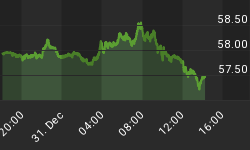The Fed's recent rate hikes have been "no brainers." The economy has been growing above its long-term trend and the fed funds rate has been below the CPI inflation rate. Any high school economics student would have known that the funds rate had to be raised. But going forward, the Fed's interest-rate decisions will be tougher calls. Why? The behavior of the Leading Economic Indicators (LEI) index is foreshadowing a slowdown in real economic growth. Indeed, a slowdown already has occurred. At the same time, though, the outlook for inflation is worsening. Perhaps it would be a good time for Greenspan to devote his full energies toward writing his memoirs and let Dean Glenn Hubbard wrestle with the upcoming tough monetary policy decisions.
With regard to the LEI, October marked its fifth consecutive monthly decline. As shown in Chart 1, the year-over-year change in the LEI is now just 1.1% -- about where it had descended to in the late spring of 2000. On a quarterly basis, the correlation between the year-over-year percent change in the LEI, when advanced by one quarter, and the year-over-year percent change in real GDP is 0.78 out of a possible 1.00 - not too shabby. Year-over-year real GDP growth recently peaked at 5.0% in the first quarter of this year. By the third quarter, that growth had moderated to 3.9%. The behavior of the LEI suggests that real GDP growth will be moderating more in the quarters ahead.

At the same time that real economic growth is moderating, there are signs that "core" inflation is accelerating. Chart 2 shows that on a year-over-year basis, the core CPI was up 2.0% in October 2004. This compares with an increase of only 1.3% in October 2003.

The principal reason for the acceleration in core CPI inflation is the acceleration in the price increases for core consumer goods. As shown in Chart 3, the year-over-year change in the index for core goods in October 2004 was 0.1%. This compares with a decline of 2.4% in October 2003. And one of the important reasons for the turnaround in core consumer goods prices is the turnaround in the prices of imported consumer goods. As shown in Chart 4, the correlation between year-over-year percentage price changes in core consumer goods and imported consumer goods is 0.72 when the imported goods prices are advanced (lead) by seven months. Given the renewed drop in the dollar and our expected continued downward trend in the greenback's foreign exchange value, we would expect the prices of imported consumer goods to rise at a faster rate going forward. In the event, we would also, then, expect core consumer goods inflation to remain on a rising trend.


There has been a significant rise in the wholesale prices of crude and intermediate goods. Yet producers of finished goods apparently have had a tough time passing through their increased costs of materials to their customers. There is some tentative evidence that this may be changing. In Chart 5 I have plotted the ratio of core finished-goods producer prices to core intermediate-goods producer prices. For the first time in months, there was an increase in this ratio in October. One month, of course, does not a trend make. Nevertheless, October could be signaling more pricing power for businesses.

Lastly, the labor-cost environment is shifting in the direction conducive to higher inflation. Chart 6 shows that the year-over-year percent change in nonfarm unit labor costs rose by 0.6% in the third quarter - their fastest increase since the third quarter of 2001. If businesses are starting to be able to pass on some of their higher materials prices to their customers, why would they not be able to pass on some of their higher labor costs?

I suspect that as the slowdown in economic growth becomes more apparent in the first quarter of 2005, the Fed policy will react to that, temporarily. That is, the Fed might call a "parade rest" in terms of its rate-hiking march. But it will only be temporary. As the dollar continues to fall, imparting upward pressure to U.S. inflation, the Fed will be forced to respond with more rate hikes later in 2005. As I said at the outset, perhaps Greenspan would prefer to take an "early" retirement and let his successor have to deal with what he has wrought.
















